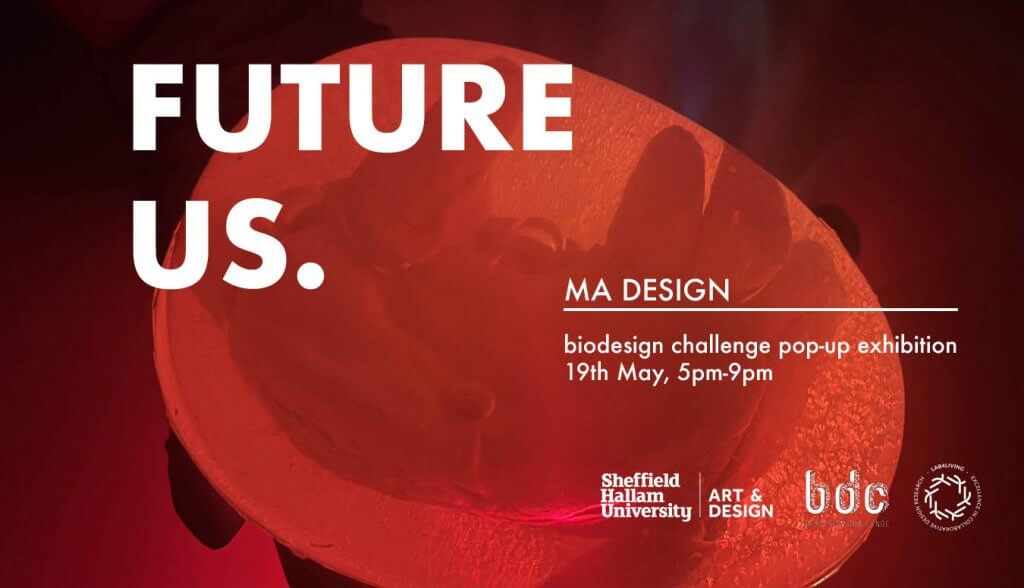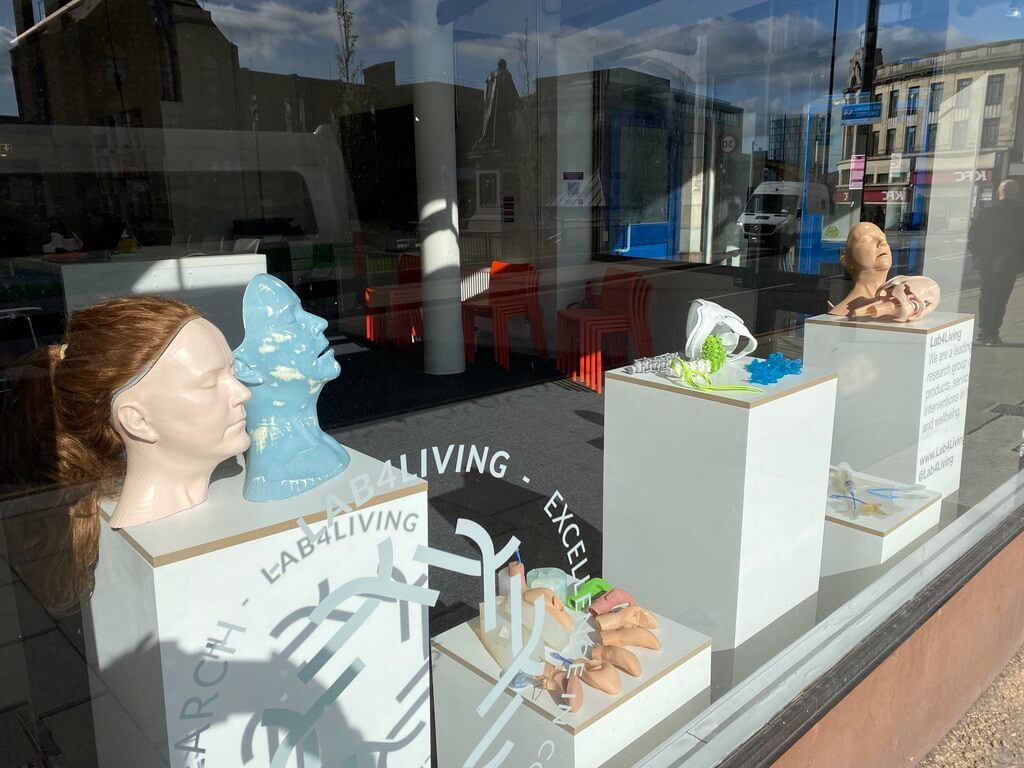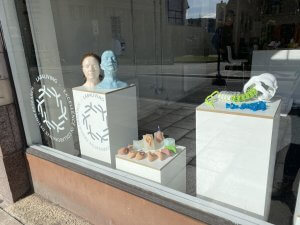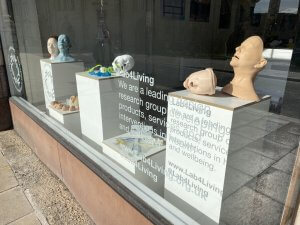17 May 2022
This month, in the exhibition side of our space in the White Building, we are hosting FUTURE US, a pop-up exhibition for a Bio Design Challenge project with MA Design students.
In the windows, you can see some example prototypes from the Obstetric Airways Trainer project with anaesthetists at Sheffield Teaching Hospitals. Designer Andy Stanton is working on a prototype obstetric airway management training tool for use in anaesthetist training.
FUTURE US
FUTURE US is a pop-up exhibition presenting the projects developed for the Bio Design Challenge by 1st year MA design students from Sheffield Hallam University, hosted by Lab4Living in the White Building on the 19th May from 5-9pm.
The exhibition invites you on a speculative journey about the human future, challenging you to rethink and reinvent the interplay between humans, nature, and technology.
As the world becomes more and more complex through; the rapid progression of technology, the accelerated breakthrough of science, and the increasing vulnerability of the natural environment, we have to reassess our lifestyle, mindset, and identity.
In the exhibition, you will discover three diverse speculative and disruptive scenarios:

- One will emotionally provoke you to reconsider your connection with your pet, ethically challenging the future relationship between humans and non-humans.
- Another one proposes a dark, underground, and unexpected service to design babies, deeply questioning bio-data privacy through time.
- The final one acts as a wake-up call confronting over-built cities far from nature with an activist organisation breaking down buildings with the help of nature.
The speculative nature of the three projects allows you to think from a different perspective. With a stimulated imagination, we can easily debate current societal issues such as animal welfare, ethics, data privacy, genetic manipulation, waste, and pollution.
This exhibition acts as a space to dream, debate, provoke and think.
The projects were supervised and supported by Noémie Soula and Daz Richardson (https://www.biodesignchallenge.org/sheffield-hallam-university-2022)
Book your tickets here (optional): https://www.eventbrite.com/e/biodesign-challenge-tickets-334438423327
Exhibition details
- Exhibition details: Thursday 19th May at The White Building, Fitzalan Square, Sheffield S1 2AZ
- Opening times: 5-9pm. Light refreshments from 5pm – 7pm.
- Related events: Future Now festival of creativity
What’s in the Window?
Obstetric Airways Trainer prototypes
We’ve been working with anaesthetists at Sheffield Teaching Hospitals on a prototype obstetric airway management training tool. Women requiring emergency ventilation (intubation) during childbirth can have different and changing needs which are not met in current training tools (based on adult males or children) used for training anaesthetists.
By building in interchangeable functionality, the design team has produced a training mannequin which can provides more realistic intubation training for the next generation of anaesthetists.

Plinth 1 (from left)
Different hair volume and styles can affect how accurately anaesthetists can position the head and neck suitably for intubation.
The training mannequin includes several interchangeable hair styles which add another variable to a realistic training scenario.
Plinth 2
Oedema (swelling) in the larynx (throat area) can occur during pregnancy. The mannequin simulates inflammation in three areas of the throat canal and tongue.
Plinth 3
Realistic head and neck movements are essential for successful medical intervention but standard mannequins incorporate limited pivot points and rotation. The mannequin’s cervical spine is designed to mimic accurate rotation, flexion and extension within each individual vertebra from C1-C7.

Plinth 4
It is difficult to accurately represent physical characteristics of the human anatomy in a realistic way with resilient materials which can be used on a daily basis.
The research team experimented with a variety of materials and liquids to emulate the articulation and swelling of the tongue and throat. The tactile nature of these artefacts is integral to a realistic training scenario.

Plint 5
During intubation “Lock-jaw” exhibited by a patient can present a difficult scenario for an anaesthetist.
The mannequin has the ability to variably restrict the movement of the lower mandible, simulating jaw joint dysfunction.
You can find more information about this project here.
What next?
- Find out more about the White Building’s history here.
- Take a virtual tour.
- Previous What’s On: April 2022
- Read about Lab4Living’s The 100 Year Life, a major programme of research taking place in the White Building.
 to top
to top
